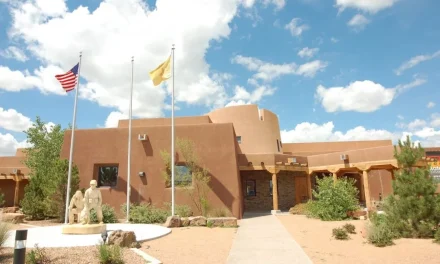Geothermal power comes from drilling down to superheated water, often as hot as 700 degrees Fahrenheit, and allowing the escaping steam to turn a turbine on the surface. This makes geothermal energy very site specific.
With much of it concentrated in isolated pockets surrounded by western mountains and deserts, vast geothermal reserves have been slow to develop. Expensive costs for exploration and connection to distant transmission networks also limit geothermal’s potential in mainstream energy markets. A 2002 policy guide by the U.S. Department of Energy expressed numerous concerns about tribes exploring geothermal potential, including harm to spiritual sites, financing, tribal decision-making, a perceived bias in tribal courts, and pushback from tribal members that were against electrification of reservations in general.Although geothermal resources are often associated with the generation of electricity, these hot spots can also contribute to local economies in a myriad of ways. The Office of Indian Energy noted that geothermal operations can aid in fish farming, bathing, concrete curing, the drying of fruits and vegetables, and beet sugar evaporation, to name a few.
From an electricity generation standpoint, geothermal requires very little land and water compared to other generation sources derived from renewable energies or from fossil fuels. Geothermal stations need only 47 acres per gigawatt (GW) produced, compared with 900 acres for coal, 1,400 acres for wind, and 4,300 acres for solar photovoltaic. The Office of Indian Energy further reported that around 6,000 megawatts (MW) of geothermal energy are in development now.
The top 5 tribes for geothermal energy development are all located in the arid deserts of Arizona and Nevada or the dry steppe of eastern Oregon. Combined, the Navajo, Tohono O’odham, Warm Springs, Pyramid Lake, and Walker River tribes have a geothermal capacity of more than 2 million megawatt-hours (MWh). According to the National Renewable Energy Laboratory (NREL), total tribal potential at 196 different sites could ultimately account for more than 2% of U.S. geothermal potential at a staggering 236 million MWh.So why are tribes not tapping this unique geological resource at higher rates?As previously mentioned, the cost of exploration to determine the best place to site the facility is a large barrier to entry. Perhaps the $2 billion loan guarantee program recently announced by the U.S. Department of Energy will help ease that burden.Another factor might lie in the often strong spiritual connection many tribes have to unique landscapes across America. In June, the U.S. Department of Agriculture rejected an application to build a nearly 200,000 acre geothermal facility in the Santa Fe National Forest after objections from the All Pueblo Council of Governors. Finding a way to harness these resources while honoring culturally relevant spiritual sites could hold the key to geothermal’s future in Indian Country.
For tribes that are able to respectfully balance culture with development, the payoff is potentially high. Just south of the border, Mexico has instituted its own loan program with the goal of harnessing some of its 25 GW of untapped geothermal resources. The Maori of New Zealand are experiencing exceptional returns by extracting silica, a common component in paint, from the geothermal fluids on their lands. Such secondary benefits from the geothermal generation process only improve the environmental and economic impacts of capturing this natural resource.
The Yellowstone Caldera and other volcanic hot spots in the American west have served many important roles throughout the centuries. Tribes now have the opportunity to utilize this unique gift from nature to sustainably and responsibly power communities. Now is the time to prove that we do not fear what bubbles from the Earth; we favor it.








